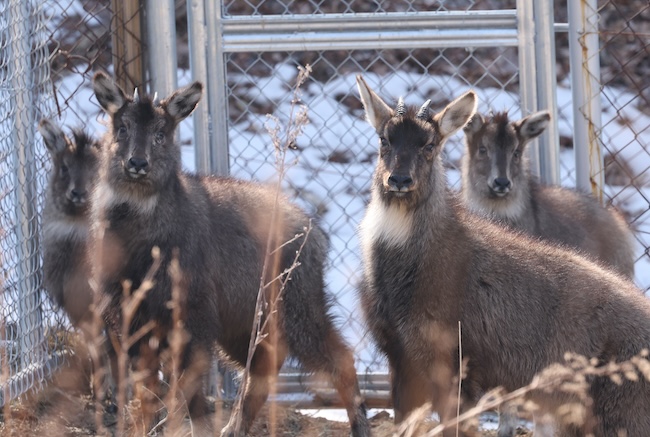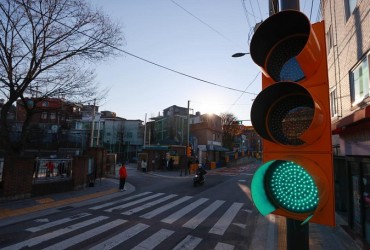
South Korea plans to open sections of fencing installed across the country to prevent the spread of African swine fever. (Image courtesy of Yonhap)
SEOUL, Apr. 12 (Korea Bizwire) – South Korea plans to open sections of fencing installed across the country to prevent the spread of African swine fever, a viral disease that has devastated pig populations globally.
The move comes after an unusually high number of deaths last winter among the long-tailed goral, a small antelope-like creature designated as a natural monument and endangered species in South Korea.
The Ministry of Environment announced on April 11 that it would convene an expert advisory meeting on April 12 to discuss a pilot project to open up parts of the fencing in northern Gangwon Province, a key habitat for the long-tailed goral, to assess the ecological impact the barriers have had.
Across South Korea, fences stretching nearly 3,000 kilometers have been erected in recent years, including more than 2,000 kilometers of larger regional fencing installed by the national government.
The impetus was the risk of African swine fever spreading from North Korea. Nearly 64 percent of the 1,179 kilometers of regional fencing installed by the Ministry of Environment from November 2019 to May 2022 was concentrated in Gangwon Province, which borders North Korea.
But the barriers intended to block the movement of wild boars may have proved too effective, also preventing other wildlife like the long-tailed goral from accessing food and ranging between habitats.
According to South Korea’s Cultural Heritage Administration, 537 of the antelopes died between November and late March, with heavy snowfall this past winter compounding the difficulty in finding forage while fenced off from other areas.
Only 15 long-tailed goral deaths were recorded from November 2021 through February 2022, making last winter’s toll especially high. The Ministry of Environment rescued 214 of the animals in northern Gangwon Province from last November through the end of March.
Over the next year, including through the pilot fence openings of 6.5 to 13 feet at 20 locations, the government plans to study the ecological effects of the fencing put up to fight African swine fever.
The 20 sites will focus on goral habitats, wildlife corridors and national parks based on input from the upcoming expert advisory meeting.
Kim Tae-oh, head of the Environment Ministry’s natural conservation bureau, acknowledged the “very regrettable” goral deaths from the heavy snowfall this past winter.
He said the ministry would carefully examine the causes while formulating plans to cope with the increasing natural disasters driven by climate change.
Government officials have defended the fences for delaying transmission of the viral disease, buying more time for a response.
With outbreaks escalating recently in North Chungcheong and North Gyeongsang provinces, they judge maintaining most fencing is needed to prevent renewed spread to Gangwon and southern Gyeonggi Province, where the disease has been more contained.
Since African swine fever was first detected in South Korea in October 2019, 3,861 cases among wild boars had been confirmed as of March 25.
M. H. Lee (mhlee@koreabizwire.com)






